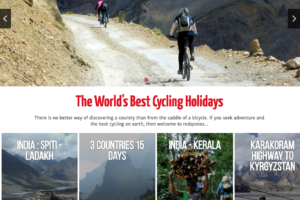HILF, a UK-based firm, recently announced the launch of their newly rebuilt website. The original website was developed using hand-coded HTML in 2004, and in 2014, it was rebuilt with a CMS. However, the site was outdated, as it could not support PHP 8, which is now mandatory for all web servers. As a result, the website was not compatible with the latest web server upgrades. HILF contacted us to rebuild the website to ensure its compatibility with the new servers, which we completed in a week.
Website Rebuild Process:
In order to create the new design, we conducted extensive research to understand HILF’s target audience and their preferences. We analyzed their competitors’ websites to gain insights on best practices and trends in the industry. With this information, we were able to create a design that not only met the client’s requirements but also resonated with their audience.
We worked closely with the client throughout the process, providing regular updates and opportunities for feedback. This ensured that the client was happy with the direction of the new design and that it aligned with their brand identity.
In addition to the visual design, we also focused on improving the user experience of the website. We simplified the navigation menu, making it easier for users to find the information they need. We also optimized the website’s performance, ensuring that it loads quickly and efficiently.
One of the key goals of the rebuild was to ensure that the website was mobile-responsive. With an increasing number of people using mobile devices to browse the internet, it was essential that the website was optimized for smaller screens. We designed the website to be fully responsive, allowing users to access the site from any device and have a seamless browsing experience.
Footer’loose and fancy
As a part of our website redesign process, we wanted to add a unique and eye-catching element to the website that would help to differentiate it from other websites in the same industry. We decided to include a vector hand-drawn silhouette graphic in the footer as a main feature in the site’s design. The silhouette graphic was carefully designed to reflect the company’s branding and to add a touch of elegance to the overall design. The graphic is visually appealing and has helped to increase engagement on the website by attracting users’ attention to the footer. Additionally, the graphic is mobile-responsive, which means that it is fully functional and visually appealing on all devices, from desktops to smartphones. Overall, this small addition to the website has had a big impact on the overall user experience and has helped to improve the website’s aesthetics.

Content Replacement:
HILF’s website had several pages of content that were outdated and irrelevant. We replaced the old content with new, up-to-date information that was more concise, engaging, and relevant to the users. This made it easier for visitors to find the information they were looking for quickly and easily.
Advanced SEO:
During the rebuild process of HILF’s website, we applied advanced SEO techniques to ensure that the website was easily discoverable by search engines. This included conducting extensive keyword research to identify the most relevant and highly searched keywords in the industry. We then used this information to optimise the website’s metadata, including titles, descriptions, and keywords, to make it easier for search engines to understand the content of the website and match it with relevant search queries.
In addition to metadata optimisation, we also implemented internal linking, which involves linking pages within the website to help distribute link equity and improve the overall structure of the website. This not only helps search engines better understand the content of the website but also helps users navigate the site and find the information they need.
Another crucial factor for SEO is website speed. Search engines favour faster websites, as they provide a better user experience. Slow-loading websites not only frustrate users but can also negatively impact search engine rankings. As such, we made sure that HILF’s website was optimised for speed, by reducing the size of images and files and optimising the website’s code.
By applying these advanced SEO techniques, we were able to improve the website’s visibility and ranking on search engines, ultimately driving more traffic to the site and generating more leads for the business.
Google-Friendly Redirects:
The new website design included a few changes to the URLs of certain pages, which could have potentially impacted their search engine rankings. However, our team of experts ensured that these changes were implemented in a way that would not negatively impact the site’s SEO. We implemented Google-friendly redirects, which allowed users to be seamlessly redirected from the old URLs to the new ones. This was done in a way that did not disrupt the user experience and ensured that the website retained its existing search engine rankings. This attention to detail was crucial in ensuring that HILF’s website remained discoverable on search engines and continued to attract new visitors.
Conclusion:
The rebuilt website was launched successfully, ensuring that it was compatible with the latest web servers, user-friendly, and optimised for search engines. The redesign also made it easier for users to find relevant information quickly and easily, leading to an increase in online traffic. HILF was impressed with the new website design, and we were happy to deliver a successful project within a short timeline.





